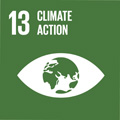- Docente: Natalia Montinari
- Credits: 6
- SSD: SECS-P/01
- Language: English
- Teaching Mode: Traditional lectures
- Campus: Forli
-
Corso:
Second cycle degree programme (LM) in
Management for Social Economy (cod. 8843)
Also valid for Second cycle degree programme (LM) in Business Administration and Sustainability (cod. 5944)
Second cycle degree programme (LM) in Economics and management (cod. 9203)
-
from Feb 14, 2024 to Mar 15, 2024
Course contents
From economic men to behavioral decision making
Human biases and emotional states: Systematic error in decision making?
Perception of risks and decision making under uncertainty
Intertemporal decision making: the sophisticated and naïve decision makers
Mental accounting and sunk costs.
Motives and Motivational Bias
Group Decision Making and social influence
Nudging: Understanding of choice architecture to promote sustainability
Experimentation and data to optimize performance accounting for environmental and social sustainability
How businesses and governments are using behavioral economics to design more sustainable systems
Readings/Bibliography
Angner. A. (2021) A Course in Behavioral Economics, London: Palgrave Macmillan, 2021, 3. , p. 327
Kahneman, D. (2011). Thinking Fast and Slow. New York: Farrar, Straus and Giroux.
Thaler, R. and Sunstein, C. (2009) Nudge: Improving Decisions about Health, Wealth and Happiness, London: Penguin.
Enste, Dominik; Wildner, Julia; Nafziger, Lucia (2021) : Going green with behavioural economics: How to combine business and ethics, IW-Report, No. 1/2021, Institut der deutschen Wirtschaft (IW), Köln
Additional readings will be provided by the teacher during the course.
Lecture notes:
The lecture notes will be made available on the IOL platform before each class (but might be corrected/updated shortly after the class). They should NOT be taken as the only reference, as they often do not cover the analytical details discussed in the manual, which are important for a thorough understanding of the subject matter.
Teaching methods
The course comprises both traditional lectures and a hands-on laboratory part.
Students will have the chance to play simple experiments in class. We will also discuss and analyze data from prominent research papers.
The class is designed to be highly interactive and students are expected to prepare presentations, videos/podcasts, and short essays.
Assessment methods
Attending students: the final grade will be determined by
• class participation, groups assignments and presentation: 50%
• final essay: 50%
Non attending students: will be evaluated with a written exam based on multiple choice questions and open questions.
The dates of the final exams are fixed and cannot be changed. Requests for additional dates will not be accepted.
The maximum possible grade is 30 cum laude. The grading scale is the following:
<18: Fail
18-23: Sufficient
24-27: Good
28-29: Very good
30: Excellent
30 cum laude: Outstanding (the instructor was impressed)
Grade rejection: students can reject the grade obtained at the exam only once. To this end, they must email a request to the instructor within the date set for registration. The instructor will confirm reception of the request asap.
Teaching tools
During the course, students will be involved in mock experiments, which should provide them with a more vivid idea of the issues to be examined later during the lecture, and active participation to the in-class discussion will be encouraged.
The mock experiments will be computer-based and will require the use of a pc, tablet or smartphone connected to the internet.
Office hours
See the website of Natalia Montinari
SDGs



This teaching activity contributes to the achievement of the Sustainable Development Goals of the UN 2030 Agenda.
